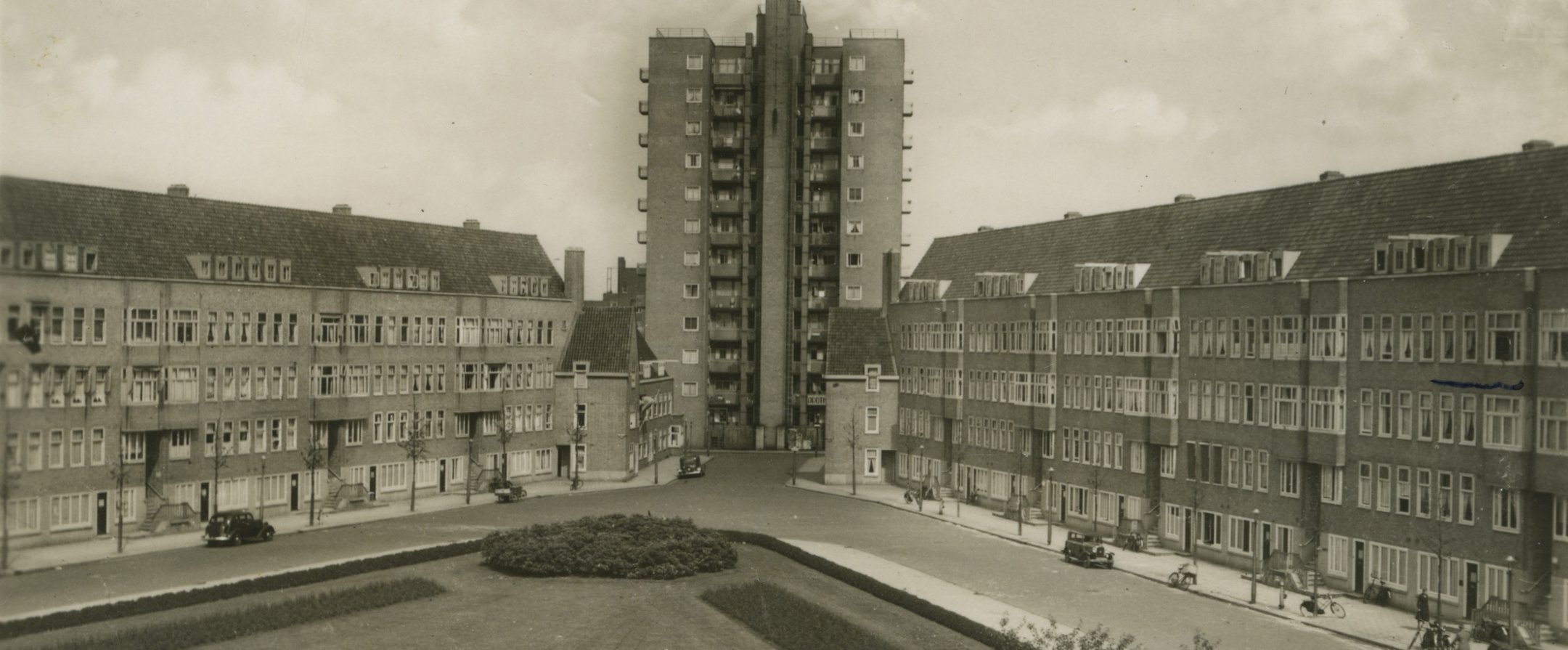Rian Verhoeven
German-Jewish Ludwig Jacob, who had come to the Netherlands at the age of sixteen on a children’s transport, often visited Merwedeplein. His brother Rudolf lived there with his wife Ursula and their son Ralph. Ludwig himself stayed in the Jewish Nieuwesluis Work Village, Wieringermeer. Together with some 300 other young Jewish refugees, he underwent agricultural training there in preparation for possible emigration to, for instance, Palestine or South America.
Young German Jews receive shelter on Merwedeplein
When the Nazis suddenly abolished the Work Village in late March 1941, Ludwig moved in with his brother at Merwedeplein. Like him, other young men from the Work Village also found shelter in the square and the neighbourhood, often with host families. German-Jewish Adolf Gerson Frohmann (28), for instance, who had been working as a teacher in Wieringermeer, lived next-door to the Frank family with his wife Karola and daughter Eva. The Franks took in a former Work Village resident as well: Hermann Wilp. Anne called him "the foster son". The young men from the Work Village often knew one another and spent time together.
The Work Village reopens
On 11 June 1941, Ludwig and other male residents of the former Work Village living in Amsterdam received a message from the Jewish Council. It said that the Nieuwesluis Work Village was re-opening and that German trucks would come to pick them up at home that evening. The board of the Work Village and the Jewish Council were pleased about the decision of the German authorities, because there was not enough work for young people in Amsterdam.
A few days earlier, SD officer Klaus Barbie had visited the Jewish Council to ask them to inform the residents of the former Work Village of the news, in order to make sure that they would not be frightened when they were picked up. And could he get a list of their names and addresses, too? The Jewish Council was fine with that. Willy Lages, head of the SD, had the list broken down by neighbourhood and ordered a number of Amsterdam police officers to pick up the men at seven pm. They received backup from the Ordnungspolizei.
